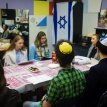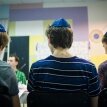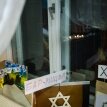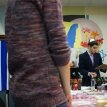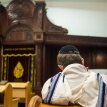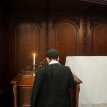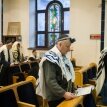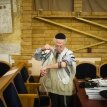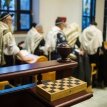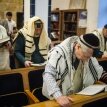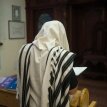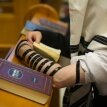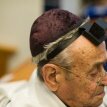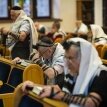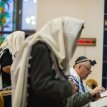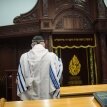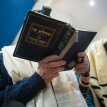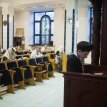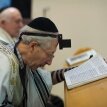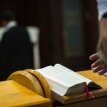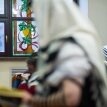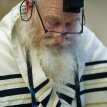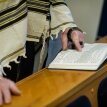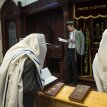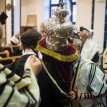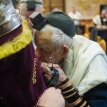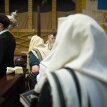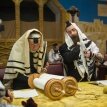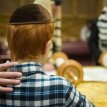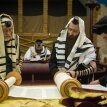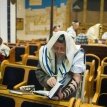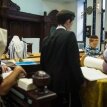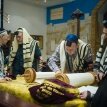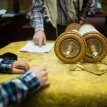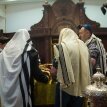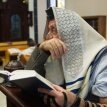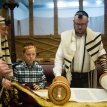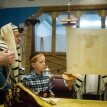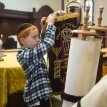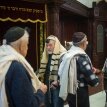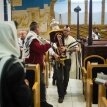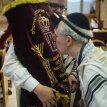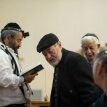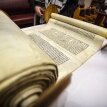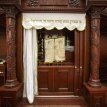Synagogue
One will not immediately recognize a religious building in the structure on the Trade Union Street. Even now it is sustained in accordance with the standards of Imperial Russia, when houses of worship were supposed to be constructed in such a way so that not to give away their purpose. However, this place - then and now - has been the center of Jewish life in Kazan.By the end of the 19th century, quite a significant number of Jewish people resided in Kazan. In particular, they were former soldiers, who had served in the military cantonist battalions, one of which was located in the capital of the province. After their resignation, they could live with their families outside the pale of settlement. There was no sustainable Jewish community in Kazan - according to estimates, the number of its members varied in 1880-1910 from 1,500 to 3,000 persons. Prayer meetings and even prayer houses were arranged in the city, but only in the rented areas. Later, industrialists, doctors, merchants and lawyers appeared in the Jewish community, and they had the money to build the synagogue. Kazan Jewish Community was officially established on March 24, 1897. A few days earlier, on March 15, 1897, they had been granted permission for the construction of the "house of worship with its own management board". But not everything was smooth from the get-go. First, there were problems with the choice of the plot of land. Jewish prayer houses had to meet the specific requirements. For example, they had to be located at a distance of at least 100 yards from Orthodox churches in the same street, and 50 yards - from Orthodox churches in a different street. In 1905, Kazan, like many other cities of the Empire, survived a Jewish pogrom. However, this only brought the community together, and they ended up selecting the Small Prolomnaya as the site for the synagogue. The two-storey residential building, bought at the end of 1912, had to be built anew, since there was almost no foundation. On March 12, 1915, the prayer house was opened. It consisted of a large two-height prayer hall, as well as a large hall for meetings and general conventions of members on the third floor that had been added to the original structure. In 1926, the synagogue was closed down, "...in view of the number of applications from the public organizations and workers petitioning to close the synagogue... the contract, concluded with the Jewish religious community, shall be terminated, the synagogue shall be closed down, and the building shall be handed over to the Municipal Administration of Kazan to be used as cultural institution for Jewish workers". The building now was home to the House of Educators. In December 1988, a group of Jewish activists appeared in Kazan - a year later, they would open the Menorah Club of Jewish Culture. In March 1990, the Kazan Jewish Religious Community was established, which in September 1994, was headed by representatives of the Chabad Lubavitch movement, Israeli rabbis Abraham Lehrer and Yehuda Zilberstrom. Jewish people actively wrote letters to the authorities petitioning them to restore justice and return the synagogue. In November 1997, the Decree on the transfer of the House of Educators to the Community was signed, and in December, during Hanukkah (Jewish holiday of the Miracle Temple Purification), the Community received the symbolic key to the synagogue. By that time, the building was practically not suitable for use with its leaky roof, torn electric lines and plugged-up sewers. All of it had to be redone. Just like in the beginning of the century, the entire city helped as much as they could — with money, transport, building materials, machinery. Now this is truly a center for Jewish life. Today, the synagogue is home to the Hesed Moshe Jewish Center of the Republican Charitable Fund, the representative office of the Jewish Agency in Russia (Sochnut), the community library, the Museum of the Jewish Community of Kazan, the Afifon Jewish Youth Center, and children's Sunday school. Curiously, the secular and the religious parts of the building harmoniously coexist with each other. This is due to the Jewish perception of a synagogue. The literal translation of the word "synagogue" from the Hebrew "beit knesset" stands for a house of assembly, uniting Jews and friends of the community under one roof, giving them a sense of unity and belonging. The main room of the synagogue is a prayer room, which is very neat and comfortable. Everything there is as it should be: rows of benches, divided into men's and women's halves. The most beautiful carved Torah Ark made from valuable types of wood is the storage vessel for Torah scrolls. And an elevated location designed for reading the Torah scrolls, bimah, covered with a tablecloth, which was preserved from the times of World War II and returned to the synagogue. The synagogue is almost always full of people. You are sure to find here a Rabbi of the Jewish community, Yitzhak Gorelik, children, learning the basics of Hebrew and traditions of the Jewish people, and young people, gathered together to celebrate the Holy Jewish day - Saturday. A sense of community and unity is what gathers the most different people under the roof of the synagogue. |
Qualities
|
